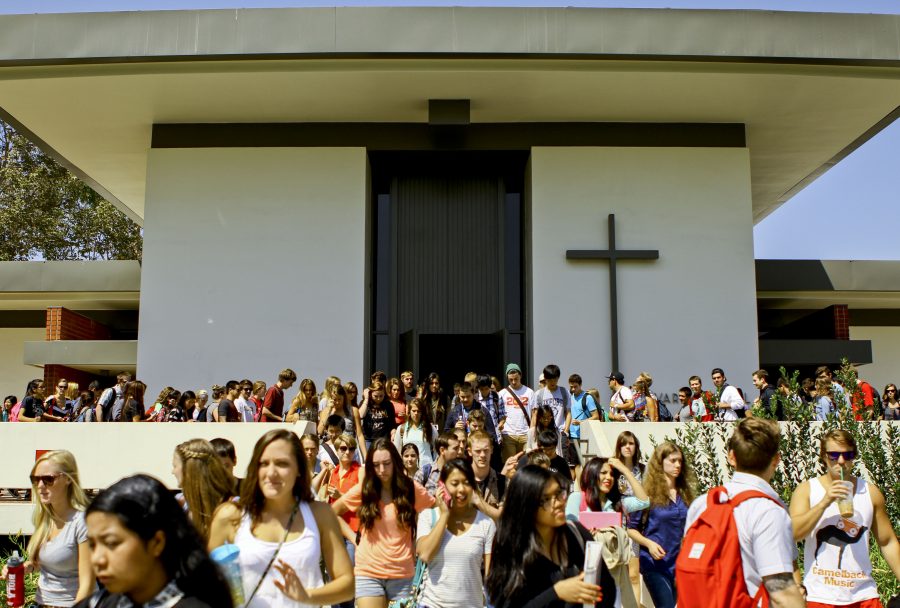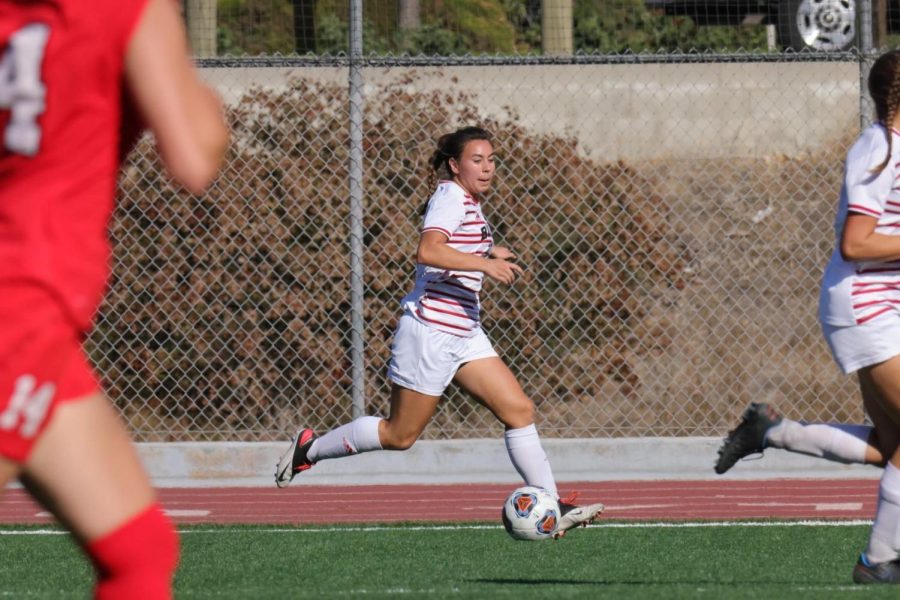Late nights, hours spent practicing, meticulous repeating of single phrases of music until reaching perfection — these describe the usual processes musicians must go through in order to perform with just one ensemble, let alone combining three.
The joy of combination
The conductors of the three different ensemble groups on campus — Chorale, Men’s Chorus and Women’s Chorus — combined their acts for the annual 2017 spring concert, “Pure Imagination,” in order to grow the musicians musically and relationally.
Though the conductors — Shawna Stewart, director of choral studies, Carol Aspling, women’s chorus director and Matthew Kellaway, men’s chorus director — have to do extra work for this performance, they do not mind because the joy of combining ensembles outweighs the mental strain. Both the professors and the students delight in the community a joint project like this offers, and the conductors love seeing students’ collaborative skills enhance and their relational aspects flourish.
“I love watching the learning process from beginning to end, but I love watching the growth that happens between the students, the relationships with each other and the relationship with me,” Aspling said.
Uniquely inspiring
All three ensembles rehearse separately but combine for the performance. The Biola Chorale never typically sing with the men’s and women’s choruses. They have split the performance time with them in the past, having the men’s and women’s chorus take the first half and the chorale take the second half. The men’s and women’s ensembles sing a few songs together, including the opening and closing songs, but they also perform individual pieces.
“With the women’s choir there’s a different timbre, so we have a different timbre than men, but when you bring them all together it creates a completely different unified sound than what we originally had,” Aspling said. “So uniquely different when they’re singing by themselves but then uniquely inspiring when they sing together.”
The men and women’s ensembles decided to collaborate on songs five years ago when they realized it could benefit both the students and the sound quality, or timbre, of the finished musical numbers, according to Kellaway. Convenience also played into the decision, as men’s and women’s chorus rehearse during the same time slot, which allowed for an easy transition into the partnership.
“It’s all about everyone together just making great, beautiful music for God,” Kellaway said. “That’s what we try to get across from them all the time and what I think we’ve done a really good job with especially in the last five years or so.”
A difficult audition
The difference between the three groups lies obviously in gender, but also in their rigor and the majors of the people involved. The Biola Chorale focuses specifically on music majors, and consequently requires a difficult audition process, which checks the singer’s music literacy, rhythm, music theory and maturity of voice.
“All three choirs are auditioned groups, but the chorale is comprised of men and women and almost all of them are music majors and they’re studying their instruments on the side as well as performing,” Aspling said.
The men’s ensemble and the women’s ensemble commenced the concert with a peaceful zen by singing their arrangement of Khumbaya, as goes their tradition. From there, the two groups and their conductors alternated and combined their performance with singing pieces such as “Weep, O Mine Eyes,” by John Bennet, and “How do I love thee?,” by Nathan Christensen, and they ended the first half of the concert with “A Clare Benediction,” by John Rutter.
The tradition of closing the performance with the same song allows veterans who attend to enjoy a familiar sound they once participated in. It creates a reminiscent experience for the previous performers and the current performers.
After the intermission, Shawna Stewart and the chorale took the stage with several pieces and a small chunk dedicated to the theme, featuring the song “Pure Imagination.” They had a number of creative arrangements, including one piece about the Northern Lights in which students used glasses filled with water to amplify the sound.
Finally, the show closed with a benediction blessing piece called “God Be in My Head,” which they had previously closed with but had not in a few years. Stewart described to the audience that she wanted to bring it back as a blessing to the audience members. The chorale filed along the aisles, surrounded the audience, and held hands. Though this made for a sweet farewell to the audience and the seniors in the ensemble, who were acknowledged at this point, some performers did not find the song particularly sweet to learn.
“That song was really hard to learn at first because the way that we have to sing it, we have to control our voices a lot more than we have to in other songs,” Susie Renihan, sophomore music performance major.
Regardless of the pain that can emerge from the taxing rehearsal process, the finished product left the performers and conductors with a gift they hope blessed the audience members with something as small as a mind breather or as large as a transcendent moment with God.
“If one person in that audience has a unique or a deeper experience coming to know the Lord through our singing, I would be thrilled — and it could be a singer, it could be me as a conductor, it could be any of us,” Aspling said. “You know, if we can come away from the concert experience as a worshipful experience, I think that’s the most satisfying.”







